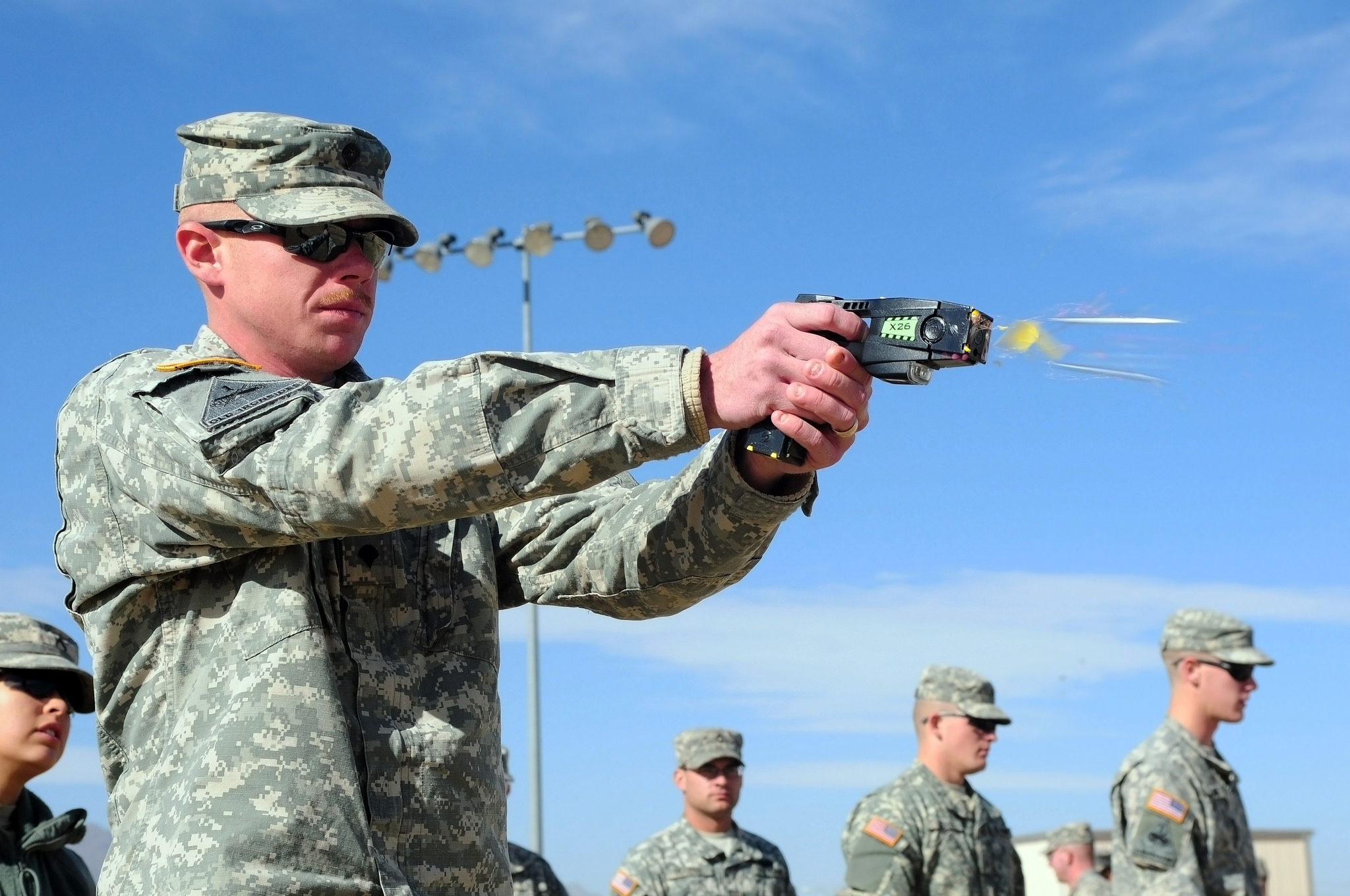While most British cops are not allowed to carry guns, the use of tasers has somehow slipped through the net. Nobody seemed to vote on it, yet the police carry them regardless.
However, it has been revealed by the BBC that those tasers have been used an astonishing 58 times in mental health settings in the six months to September 2017.
This is astonishing because you would hope that the general goal of mental health settings would be to keep people calm and focus on their wellbeing. Whatever the problem, whatever the diagnosis or circumstance, there is nothing that calm and a focus on wellbeing would make worse. There are, however, a multitude of situations in which the violent use of a taser gun would exacerbate what was clearly already a problem.
The “use” of a taser is classed as drawing, aiming or shooting a taser; the data from the BBC demonstrates that the devices were fired 22 times, including twice at people under the age of 17, once against a 15-year-old girl. We can feel confident that, whatever she was doing or however distressed she was, shooting a taser at her would not have gone any way to resolve her distress or fix the situation she was in.
What mental health settings are really like
From day care to acute inpatient wards, I’ve seen a lot of the inside of mental health settings throughout my life, either as a patient or a visitor.
There’s no predicting quite how these places will be. Despite fears that axe-wielding men or shrieking naked women will be running around the place, they are rarely so interesting. Mostly, it’s a collection of subdued, heavily medicated people trying to feel a bit better about themselves. There will be chaotic clients or people who are hyper or manic, there will be those hearing voices who may be talking back to them (which some people find disturbing to witness) but, really, you are just dealing with a lot of people getting a bit of support to get their lives back together.
Often, a camaraderie builds up. Service users facing adversity pool together, offering peer support and advice and information based on their own experiences. It was fellow patients, not doctors, who would warn me of the worst of the side effects of some new medication I had been prescribed. Who told me which benefits to apply for when I was living on zero income and failing to pay my rent. Who walked me to the bus stop when the world felt a bit frightening.
So, it was service users who could tell when someone was feeling under the weather, and who knew whether things were just a bit rough or whether someone was truly teetering on the edge of a crisis. Whether they could get professional support in time for that crisis to really manifest was hit and miss, and that is where people might explode or act out or kick off.
I suspect those were the situations in which tasers have been used here in the UK. And, if so, it is the worst timing possible.
When a person is at breaking point, they may need to be talked down, or negotiated with, or simply reassured. The very presence of the police is hardly a reassuring sign for many people, so ideally it would be familiar members of staff or other service users who were very close to the individual who would be trying to intervene before things got really, really bad.
I’ve been ushered into side rooms as people threatened violence and I’ve alerted members of staff when a patient was ready to break. But never have I felt that the appropriate response in those situations was 50,000 volts of electricity from a police officer who was freaking out because they did not know what else to do.
Who is getting tasered?
While the stats received by the BBC give little detail of the demographics of those being tasered, we know that Black men are often on the receiving end of the worst of police brutality. Similarly, this group of adults is often under-treated in the community, resulting in bigger mental health crises occurring and in-patient treatment – including sectioning (forced treatment) – being required. It would therefore stand to reason that Black men might have been tasered more than their white or female counterparts, last year.
Similarly, neurodiverse people’s behaviour is often misinterpreted by the police as being wilfully difficult, especially when they are in distress. And migrants and those for whom English is not a first language face being misinterpreted while they are feeling their worst.
It seems like it should be blindingly obvious that mental health settings are not appropriate places to unleash taser guns. The more distressed a person is, the less they will respond to violence and brutality; the less in distress a person is, the less they need to be restrained.
Bear in mind that mental health patients have enough to deal with already, with forced drugging and even forced ECT being allowed when a person is under a section. Those people who are being held away from their home in particular can struggle to cope. Add massive jolts of electricity to the mix and trust in members of staff will diminish, centres for mental health will become more menacing, and services will have increased cases of PTSD to deal with in the future.
Photo: Christopher Smythers/Creative Commons

